Intensity Warm
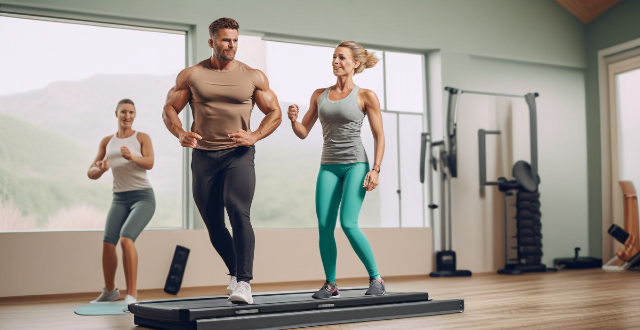
Is it necessary to do a warm-up even for low-intensity workouts ?
A proper warm-up is crucial for any workout, including low-intensity exercises. It increases blood flow and oxygenation, raises muscle temperature, improves range of motion, primes the nervous system, reduces injury risk, and boosts performance. Even for gentle activities like walking or yoga, a warm-up enhances mental focus, gradually activates muscles, promotes consistency, supports joint health, and eases into stretching. Warm-up ideas include walking, dynamic stretching, Tai Chi movements, Pilates exercises, and deep breathing or meditation. Incorporating a warm-up before any workout is essential for maximizing performance, reducing injury risk, and enhancing overall health benefits.

How do I properly warm up before a gym workout ?
A proper warm-up is crucial before starting any gym workout. It helps to prepare your body for the physical demands of exercise, reduces the risk of injury, and improves performance. Here are some steps to follow for a proper warm-up: 1. Start with 5-10 minutes of low-intensity cardiovascular exercise such as walking, jogging, or cycling. 2. Move on to dynamic stretching exercises that involve moving your joints through their full range of motion while gradually increasing intensity. 3. Perform activation exercises that activate specific muscle groups that you will be using during your workout. 4. Spend a few minutes rolling out areas that feel tight or sore with a foam roller. 5. Perform mobility drills that help to improve flexibility, stability, and coordination. 6. Finally, perform a few warm-up sets of the exercises you plan to do in your workout. Remember to listen to your body and adjust the duration and intensity of your warm-up based on how you feel. A proper warm-up should leave you feeling energized and ready to tackle your workout.
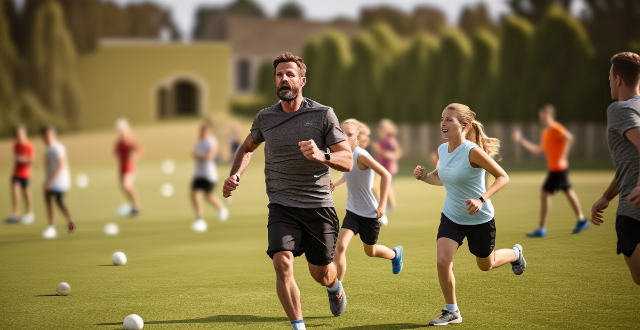
How long should a warm-up session typically last before engaging in sports ?
Warming up is crucial for sports to prevent injuries and prepare the body. The duration varies by sport type, fitness level, and activity intensity, generally lasting 5-15 minutes. Effective warm-ups include low-intensity activities, dynamic stretches, and sport-specific exercises.

How can I avoid injury after a high-intensity workout
To avoid injury after a high-intensity workout, it is important to warm up properly, stretch, use proper form, take breaks, stay hydrated, and wear appropriate clothing. These tips will help reduce the risk of injury and allow you to continue enjoying the benefits of high-intensity workouts.
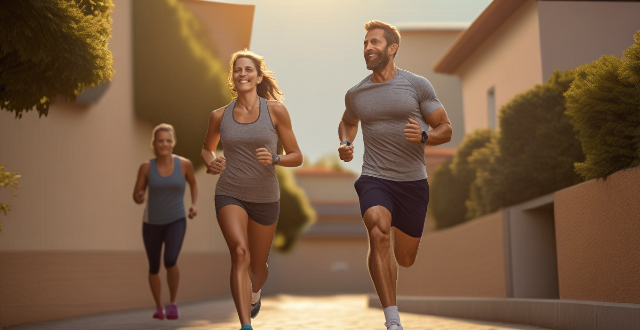
Can stretching alone be an effective warm-up for athletes ?
Stretching alone may not be sufficient as a warm-up for athletes due to limited cardiovascular benefits, insufficient muscle activation, and potential risks associated with static stretching. An effective warm-up should include dynamic stretching, sport-specific movements, gradual progression, and sufficient time to adequately prepare the body for physical activity and reduce the risk of injury.

Should warm-up routines vary based on the individual's fitness level ?
In this article, we have discussed the importance of warm-up routines and whether they should vary based on the individual's fitness level. We concluded that while there are general principles that apply to most warm-up routines, it's important to tailor your warm-up to your individual needs and goals. By doing so, you can optimize your performance and minimize the risk of injury during your workouts.

How does climate variability impact the frequency and intensity of extreme weather events like floods and hurricanes ?
Climate variability, which can be natural or human-induced, has a significant impact on the frequency and intensity of extreme weather events such as floods and hurricanes. Changes in rainfall patterns, sea level rise, and land use changes can increase the risk of flooding, while warmer ocean temperatures, atmospheric conditions, and El Niño Southern Oscillation (ENSO) can affect hurricane formation and intensity. As our planet continues to warm due to human activities, it is crucial that we take steps to mitigate the impacts of climate change and adapt to its effects on our environment and communities.

What are some effective warm-up exercises before starting a run ?
This article emphasizes the importance of warm-up exercises before starting a run. It discusses the benefits of dynamic stretching and light aerobic activities, such as high knees, butt kicks, leg swings, jogging in place, side shuffles, and high knees forward march. It also mentions static stretching as an optional component of warm-up routines, focusing on major muscle groups used during running. Finally, it highlights the necessity of proper cool-down and stretching post-run to aid muscle recovery and reduce soreness.
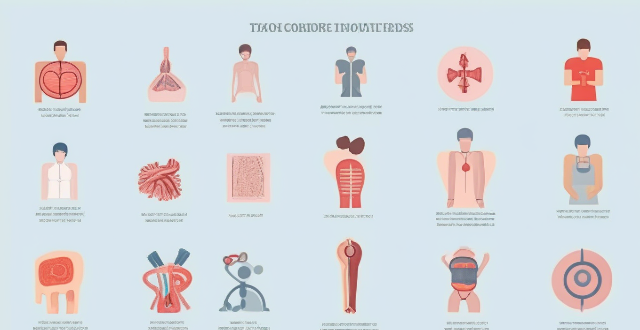
How does a warm-up affect performance in sports ?
Warming up before sports activities is crucial for enhancing performance and preventing injuries. A proper warm-up increases blood flow to the muscles, reduces injury risk, improves coordination and reaction time, and provides mental preparation. There are different types of warm-ups, including general warm-up, specific warm-up, and dynamic stretching. Incorporating these warm-up activities can optimize an athlete's performance and minimize the risk of injuries during competition.

What are some effective warm-up routines for preventing sports injuries ?
Effective Warm-Up Routines for Preventing Sports Injuries: A proper warm-up routine prepares your body for the demands of the sport or exercise by increasing blood flow, raising your heart rate, and loosening up your muscles and joints. Dynamic stretching, light aerobic exercise, sports-specific movements, foam rolling, and cooling down are effective warm-up routines that can help prevent sports injuries.

How does high-intensity interval training (HIIT) affect cardiorespiratory fitness ?
High-intensity interval training (HIIT) is a form of exercise that involves short bursts of intense activity followed by periods of rest or low-intensity exercise. This type of training can improve cardiorespiratory fitness by increasing the heart rate and improving blood flow throughout the body, leading to improved muscle performance and endurance. HIIT also helps to burn calories and fat, making it an effective way to promote weight loss. Additionally, HIIT workouts can be done in a shorter amount of time than other forms of exercise, making it a great option for those who are short on time but still want to stay active and healthy. Overall, incorporating HIIT into your workout routine can provide numerous benefits for your cardiorespiratory fitness and overall health.

Is high-intensity interval training (HIIT) beneficial for reducing stress ?
The text discusses the potential benefits of High-Intensity Interval Training (HIIT) for stress reduction, including releasing endorphins, improving cardiovascular health, boosting self-confidence, enhancing focus and concentration, and providing a sense of accomplishment. It also provides tips for incorporating HIIT into a routine, such as starting slowly, choosing enjoyable activities, setting realistic goals, incorporating recovery time, and seeking professional guidance.

Is it safe for elderly people to engage in high-intensity workouts ?
The safety of high-intensity workouts for elderly people depends on various factors such as health status, fitness level, balance and coordination, recovery time, and necessary modifications and adaptations. It is essential to consult with a healthcare professional before starting any exercise program.

Are there different warm-up routines for various types of sports ?
Warm-up routines vary by sport to prepare the body for activity and prevent injury. Examples include dynamic stretches, light exercises, and specific drills tailored to each sport's physical demands.

What are the benefits of a proper warm-up before physical activity ?
Warming up before physical activity is crucial for performance and injury prevention. Key benefits include increased blood flow, enhanced muscle temperature, joint lubrication, mental preparation, reduced injury risk, improved performance, and less muscle soreness. Incorporating a structured warm-up with dynamic stretching and specific exercises can maximize these benefits.
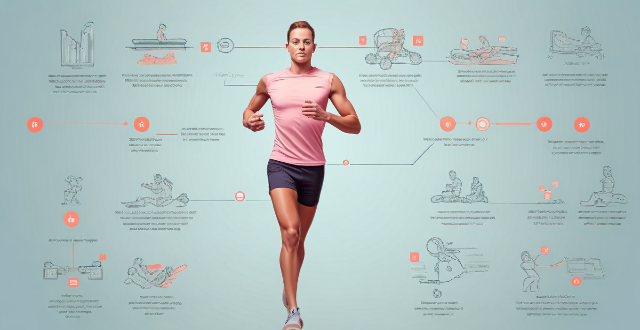
How does exercise physiology explain the benefits of high-intensity interval training (HIIT) ?
High-intensity interval training (HIIT) is a form of exercise that involves short, intense bursts of activity followed by periods of rest or low-intensity exercise. From an exercise physiology perspective, HIIT offers numerous benefits, including increased metabolic rate, improved cardiovascular health, muscle development and endurance, favorable hormonal responses, mental health advantages, reduced injury risk, and time efficiency. These factors make HIIT a popular and effective method for achieving various fitness goals.

Is there a specific duration or intensity of exercise needed to improve immune function ?
The relationship between exercise and immune function is complex, but research suggests that regular physical activity can enhance the immune system. However, both the duration and intensity of exercise play significant roles in achieving this beneficial effect. The American Heart Association recommends at least 150 minutes of moderate-intensity aerobic activity or 75 minutes of vigorous-intensity activity per week for adults. Engaging in prolonged periods of endurance exercise can temporarily suppress immune function due to increased stress on the body. Light activities like walking or yoga can still offer immune benefits by reducing stress and promoting overall health. Regular moderate to high-intensity exercises, such as jogging, cycling, or strength training, are generally considered optimal for enhancing immune function. Adequate rest and recovery are crucial for maintaining a healthy immune system. Combining different types of exercises (aerobic, strength training, flexibility work) can provide a well-rounded approach to enhancing immune function. Staying hydrated and consuming a balanced diet rich in nutrients supports both exercise performance and immune health. Other lifestyle habits, including sleep quality, stress management, and avoidance of harmful substances, also play a vital role in supporting immune function alongside exercise.

Are there any specific stretches or warm-up routines that aid in sports recovery ?
Recovery is an essential aspect of sports and physical activities. Stretching and warm-up routines can aid in reducing the risk of injuries, improving performance, and enhancing overall well-being. Specific stretches such as hamstring, calf, and quadriceps stretches can increase flexibility, reduce muscle tension, and promote blood flow. Warm-up routines like cardiovascular exercises, resistance band exercises, and foam rolling can activate muscles, improve circulation, and reduce tightness. Incorporating these routines into your recovery process can help you achieve better results and prevent injuries.
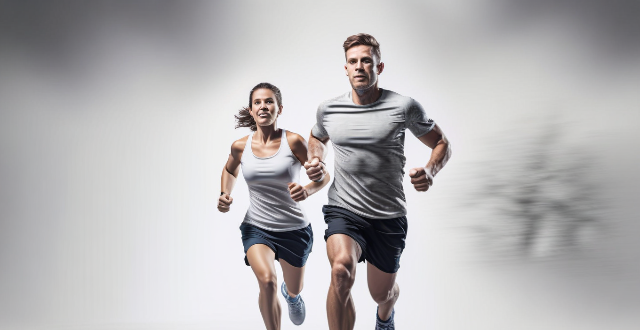
What are some dynamic warm-up exercises that can be done before running ?
Dynamic warm-up exercises are essential for runners to improve performance and reduce injury risk. These include high knees, butt kicks, leg swings (front and side), walking lunges, toy soldiers, ankle circles, side shuffles, plank to runner's lunge, jumping jacks, and light jogging. Each exercise targets specific muscles and joints, enhancing mobility, flexibility, and circulation. Completing these warm-ups prepares the body for running, ensuring better efficiency and comfort during the activity.

Are there any risks associated with high-intensity workouts for seniors, especially in a group setting ?
High-intensity workouts in a group setting pose certain risks for seniors, including cardiovascular strain, musculoskeletal stress, overexertion and fatigue, and social and psychological factors. To minimize these risks, seniors should consult with a healthcare professional, start slowly and gradually increase intensity, focus on low-impact activities, stay hydrated and monitor temperature, wear appropriate footwear and clothing, listen to their body, and seek supervision from qualified instructors.

How does warming up prevent injuries during exercise ?
Warming up is crucial for preventing injuries during exercise by raising body temperature, increasing blood flow, and loosening up muscles. It also prepares the mind for the upcoming activity. General warm-up exercises increase overall body temperature, while specific exercises mimic the movements of the sport or activity. An effective warm-up routine should start slowly, focus on major muscle groups, include gentle stretches, and not be rushed. Incorporating a thorough warm-up can significantly reduce the risk of injuries and improve performance.

How long should my gym sessions be to maximize results ?
Maximizing Gym Sessions for Optimal Results: The duration of your gym sessions can significantly impact your results. To maximize your outcomes, consider factors such as your goals, fitness level, and schedule. Recommended durations vary based on goals: muscle building requires 60-90 minutes, weight loss benefits from 30-45 minutes of HIIT or circuit training, and cardiovascular health improves with 30-60 minutes of moderate-intensity workouts. Intensity matters, with shorter high-intensity workouts being more effective for fat loss and longer moderate-intensity sessions building endurance. Listen to your body and adjust accordingly, allowing for adequate rest and recovery days to prevent injury and promote muscle growth.

How long should my at-home workouts be to achieve maximum efficiency ?
When determining the ideal duration for at-home workouts, consider goals, fitness level, intensity, rest, time availability, and workout structure. Beginners may benefit from shorter sessions, while intermediate/advanced exercisers might need longer ones. High-intensity workouts can be shorter, while lower-intensity ones may require more time. Rest and recovery are crucial to avoid overtraining and injury. Quality over quantity is key, especially with limited time availability. Incorporating a warm-up, targeted exercises, and a cooldown/stretching period into your routine can make even shorter sessions effective.

How can I use heart rate monitoring to improve my workout routine ?
Using a heart rate monitor can significantly improve your workout routine by providing valuable insights into your body's response to exercise. Here's how you can leverage heart rate monitoring to optimize your fitness regimen: - Understanding Heart Rate Zones: Your heart rate varies depending on the intensity of your workout. By understanding these heart rate zones, you can tailor your workouts to achieve specific goals, such as fat burning, endurance building, or performance improvement. - Setting Goals Based on Heart Rate: Establish clear objectives for each workout session based on your heart rate data, such as endurance training, weight loss, or performance enhancement. - Tracking Progress: Consistently monitor your heart rate during workouts to track progress, including recording resting heart rate and assessing recovery time. - Adjusting Intensity: Modify your workout intensity based on your heart rate feedback, such as increasing intensity if you're consistently below your target heart rate zone or decreasing intensity if you're above it. - Preventing Overtraining: Use heart rate data to avoid overtraining by staying within recommended heart rate limits and recognizing signs of overexertion. - Personalizing Your Workouts: Customize your routine with heart rate in mind by incorporating different training methods and experimenting with different activities to see which ones give you the desired heart rate response.

How does caffeine influence workout intensity and results ?
Caffeine can boost workout intensity and results by increasing energy levels, improving focus, and enhancing endurance. However, it's important to be aware of potential side effects like dehydration risks, sleep disruption, and dependency issues. Moderation and individualized consideration are key when incorporating caffeine into a fitness routine.

Is it necessary to stretch after a high-intensity workout
Topic: Stretching after a high-intensity workout Summary: The author believes that stretching is essential after a high-intensity workout for Americans. It helps to reduce muscle soreness and stiffness, improve flexibility, prevent injuries, increase blood flow, and promote recovery. Therefore, the author recommends incorporating stretching into their post-workout routine.

What are the symptoms of hypothermia and how can I treat it ?
The text discusses the symptoms and treatment of hypothermia, a condition that occurs when the body loses heat faster than it can produce. Symptoms include shivering, slurred speech, slow breathing, weak pulse, clumsiness, drowsiness, confusion, and loss of consciousness. Treatment involves moving the person to a warm location, removing wet clothing, warming them up gradually with blankets or hot water bottles, giving them warm fluids, and seeking medical attention immediately. The text emphasizes the importance of prevention by dressing appropriately for cold weather conditions, staying dry, and limiting time outdoors during extreme weather events.

How long should my aerobic workouts be ?
Aerobic exercises, or cardio workouts, are vital for overall health and fitness. The American Heart Association recommends at least 150 minutes of moderate-intensity activity or 75 minutes of vigorous activity per week. This can be broken down into shorter sessions throughout the day. Starting slow and gradually increasing duration and intensity is advised. Mixing up activities helps prevent injury and keeps workouts interesting. Benefits include improved cardiovascular health, weight management, mood enhancement, and a stronger immune system. Always consult with a healthcare professional before starting any new exercise regimen.